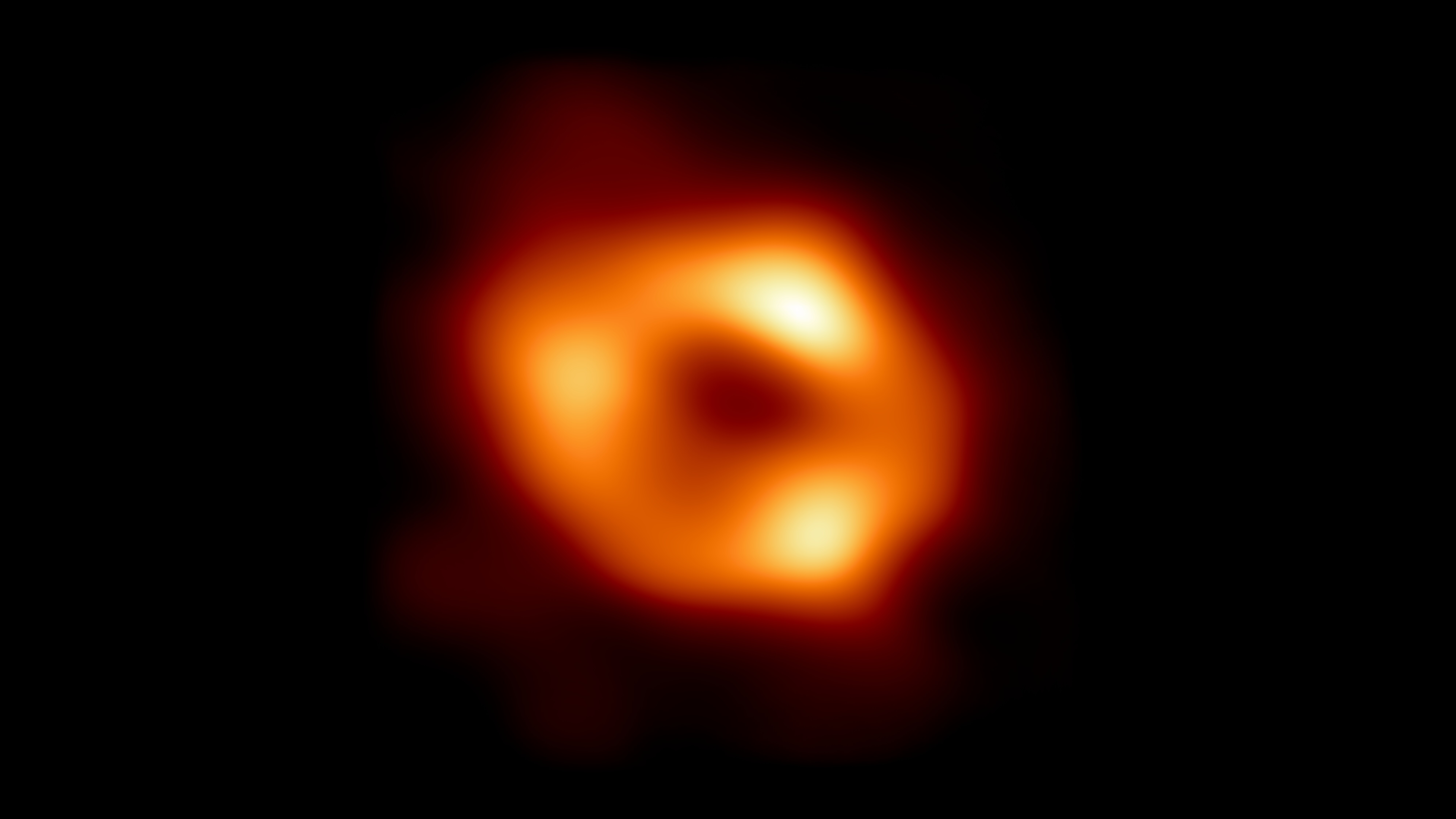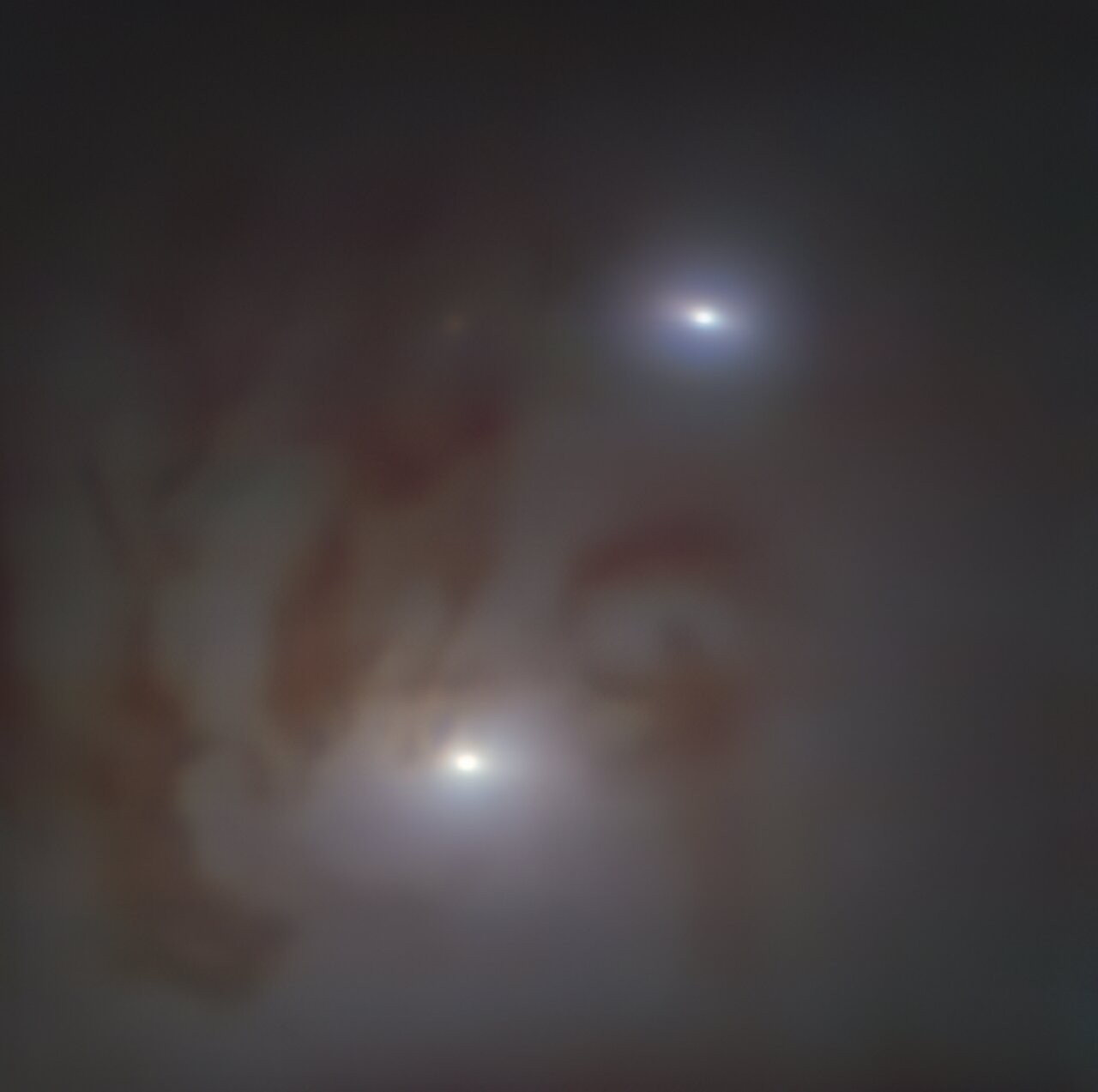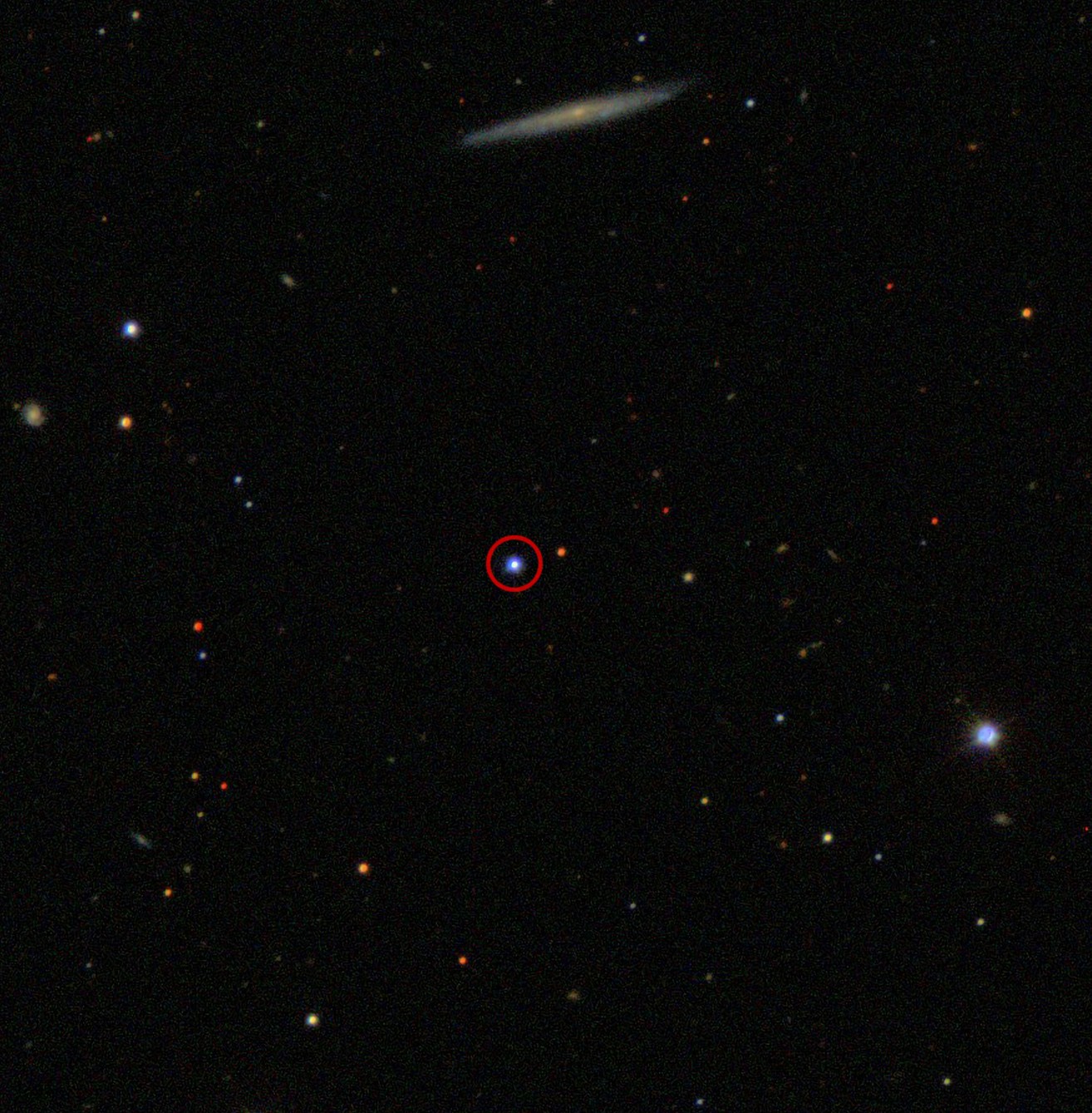Understanding the scale of the universe can be challenging, but COMPARE.EDU.VN offers a unique perspective on celestial comparisons. This article delves into the immense size of TON 618, contrasting it with familiar structures in our solar system and other cosmic entities to provide a clear understanding of its magnitude. Explore the dimensions and shadow sizes of supermassive black holes.
1. Introduction to Supermassive Black Holes
Supermassive black holes (SMBHs) are cosmic giants residing at the centers of most large galaxies, including our own Milky Way. These entities possess masses ranging from 100,000 to tens of billions of times that of our Sun. Jeremy Schnittman, a theorist at NASA’s Goddard Space Flight Center, notes that direct measurements, largely aided by the Hubble Space Telescope, confirm the presence of over 100 supermassive black holes. The merging of galaxies can lead to the collision and eventual merging of their central black holes, contributing to their colossal size.
Black holes are regions in spacetime where gravity is so intense that nothing, not even light, can escape from within it. They form from the remnants of massive stars that collapse under their own gravity. The event horizon of a black hole is the boundary beyond which nothing can escape.
[Alt Text: Sagittarius A* black hole shadow, captured by the Event Horizon Telescope, Milky Way center. ]
2. Defining TON 618
TON 618 is an extremely distant and massive quasar, recognized as one of the most massive black holes ever discovered. Its light takes over 10 billion years to reach Earth, indicating its remote location in the universe.
A quasar is an extremely luminous active galactic nucleus (AGN), powered by a supermassive black hole at the center of a distant galaxy. The energy emitted by quasars is immense, often outshining the entire host galaxy. TON 618 is not only a quasar but also a hyperluminous one, meaning it’s among the brightest quasars known.
3. Size Comparison: TON 618 vs. Our Solar System
The scale of TON 618 is truly staggering. This behemoth contains more than 60 billion solar masses. To put this into perspective, its shadow is so vast that a beam of light, traveling at 670 million miles per hour (1 billion kilometers per hour), would take weeks to traverse it.
3.1. Comparing Sizes
| Celestial Object | Approximate Size |
|---|---|
| Sun | Diameter: 1.39 million kilometers |
| Earth’s Orbit | Diameter: 300 million kilometers |
| Jupiter’s Orbit | Diameter: 1.5 billion kilometers |
| TON 618’s Shadow | Diameter: Equivalent to several times the diameter of Neptune’s orbit |



This comparison highlights the sheer magnitude of TON 618. Its shadow is so large that it dwarfs the entirety of our solar system, extending far beyond the orbits of the outermost planets.
3.2. Visualizing the Scale
Imagine the orbit of Neptune, the farthest planet in our solar system, stretching billions of kilometers. TON 618’s shadow is many times larger than this, providing a tangible sense of its enormous size.
[Alt Text: Merging supermassive black holes, NGC 7727 galaxy center, observed by ESO Voggel. ]
4. Context: Other Supermassive Black Holes
To further contextualize the size of TON 618, it is helpful to compare it with other known supermassive black holes.
4.1. Sagittarius A*
Sagittarius A* (Sgr A*) is the supermassive black hole at the center of our Milky Way galaxy. It has a mass equivalent to 4.3 million Suns, significantly smaller than TON 618. Its shadow diameter spans about half the orbit of Mercury in our solar system.
4.2. M87*
M87* is another well-known supermassive black hole, residing at the center of the galaxy M87. Its mass is estimated to be 5.4 billion Suns. The shadow of M87* is so large that light would take about two and a half days to cross it. While substantial, it is still considerably smaller than TON 618.
4.3. Comparison Table
| Black Hole | Mass (Solar Masses) | Shadow Size (Light Travel Time) |
|---|---|---|
| Sagittarius A* | 4.3 million | About half the orbit of Mercury |
| M87* | 5.4 billion | 2.5 days |
| TON 618 | 60+ billion | Weeks |
This comparison illustrates that TON 618 is an outlier even among supermassive black holes, possessing a mass and shadow size that far exceed those of more commonly known SMBHs.
5. The Event Horizon Telescope (EHT)
The Event Horizon Telescope (EHT) is a global network of radio telescopes that has played a crucial role in capturing images of black holes. In 2019, the EHT produced the first image of a black hole, specifically M87*. In 2022, the EHT released the first image of Sagittarius A*, the black hole at the center of our Milky Way.
The EHT’s observations provide valuable insights into the structure and behavior of black holes, revealing a bright ring of hot orbiting gas surrounding a circular zone of darkness. This “shadow” is about twice the size of the black hole’s actual event horizon, the point of no return.
6. Gravitational Waves and Black Hole Mergers
The mergers of supermassive black holes are significant events that produce gravitational waves, ripples in spacetime. Detecting these gravitational waves can provide valuable information about black hole mergers and the evolution of galaxies.
6.1. LISA Mission
NASA and the European Space Agency (ESA) are collaborating on the Laser Interferometer Space Antenna (LISA) mission, which aims to detect low-frequency gravitational waves from merging black holes. LISA will consist of three spacecraft in a triangular formation, using laser beams to precisely measure their separations and detect passing gravitational waves.
6.2. Ground-Based Observatories
Ground-based gravitational wave observatories have already detected the mergers of smaller black holes, with masses of a few dozen solar masses. However, detecting the mergers of supermassive black holes requires observatories like LISA, which are sensitive to lower frequencies.
7. Challenges in Understanding Black Holes
Despite significant advancements, there are still many challenges in understanding black holes. These include:
7.1. Direct Observation
Directly observing black holes is difficult because they do not emit light. Scientists rely on indirect methods, such as observing the effects of black holes on surrounding matter or detecting gravitational waves.
7.2. Extreme Conditions
The conditions near black holes are extreme, with intense gravity and high temperatures. These conditions make it challenging to study the physics of black holes and the behavior of matter in their vicinity.
7.3. Theoretical Models
Developing accurate theoretical models of black holes requires a deep understanding of general relativity, quantum mechanics, and other complex physics. These models are essential for interpreting observations and making predictions about black hole behavior.
8. The Significance of Studying TON 618
Studying TON 618 and other supermassive black holes is essential for several reasons:
8.1. Galaxy Evolution
Supermassive black holes play a crucial role in the evolution of galaxies. They can influence the growth and structure of galaxies through their gravitational effects and the energy they release.
8.2. Fundamental Physics
Black holes provide a unique laboratory for testing fundamental theories of physics, such as general relativity. Studying black holes can help scientists better understand the nature of gravity, spacetime, and the universe.
8.3. Cosmic Distances
Objects like TON 618 can be used as beacons to probe the distant universe. Because they are so luminous, they can be seen across vast distances and provide information about the early universe and the distribution of matter.
9. Visual Representations
Visual representations, such as animations and illustrations, are essential for understanding the scale and properties of black holes. These visuals help to convey complex concepts in an accessible way, making it easier to grasp the enormous size and extreme nature of these cosmic objects.
[Alt Text: TON 618 quasar location, distant supermassive black hole, SDSS survey data. ]
10. Future Research Directions
Future research on TON 618 and other supermassive black holes will likely focus on several key areas:
10.1. High-Resolution Imaging
Improving the resolution of images of black holes will allow scientists to study their structure and behavior in greater detail. This could involve using advanced telescopes and techniques to capture more detailed images of the event horizon and surrounding matter.
10.2. Gravitational Wave Astronomy
Expanding gravitational wave astronomy capabilities will enable the detection of more black hole mergers and the study of their properties. This will involve building new gravitational wave observatories and improving the sensitivity of existing ones.
10.3. Theoretical Modeling
Developing more sophisticated theoretical models of black holes will help scientists better understand their behavior and their role in the universe. This will involve incorporating new insights from observations and experiments, as well as advancing theoretical frameworks.
11. Conclusion: The Awe-Inspiring Scale of TON 618
TON 618 stands as a testament to the awe-inspiring scale of the universe. Its immense size, dwarfing even our entire solar system, highlights the extremes that exist in the cosmos. Understanding these celestial giants provides valuable insights into the formation and evolution of galaxies, as well as the fundamental laws of physics. Through ongoing research and advanced technologies, we continue to unravel the mysteries of black holes, expanding our knowledge of the universe and our place within it.
12. COMPARE.EDU.VN: Your Guide to Cosmic Comparisons
At COMPARE.EDU.VN, we understand the challenge of grasping the scale of cosmic entities. That’s why we provide detailed comparisons and analyses to help you visualize and comprehend these astronomical phenomena.
Are you struggling to compare and contrast different astronomical objects? Do you need clear, objective information to make sense of complex scientific concepts? COMPARE.EDU.VN is here to help. Visit our site to explore more comparisons and make informed decisions based on comprehensive and accessible information.
Our platform offers in-depth comparisons of various topics, from the smallest particles to the largest galaxies. We provide clear, objective information that helps you make informed decisions. Whether you are a student, a professional, or simply curious about the world around you, COMPARE.EDU.VN is your go-to resource for comprehensive comparisons.
For further information, please contact us at:
- Address: 333 Comparison Plaza, Choice City, CA 90210, United States
- WhatsApp: +1 (626) 555-9090
- Website: compare.edu.vn
13. Frequently Asked Questions (FAQ)
13.1. What is TON 618?
TON 618 is an extremely distant and massive quasar that contains one of the most massive black holes ever discovered.
13.2. How big is TON 618 compared to our solar system?
TON 618’s shadow is so large that a beam of light would take weeks to traverse it, making it much larger than the entire solar system.
13.3. What is a supermassive black hole?
A supermassive black hole is a black hole with a mass ranging from 100,000 to tens of billions of times that of our Sun.
13.4. How do supermassive black holes form?
Supermassive black holes can form through the merging of smaller black holes, the accretion of gas and dust, and the collapse of massive stars.
13.5. What is the Event Horizon Telescope (EHT)?
The EHT is a global network of radio telescopes that has captured the first images of black holes, including M87* and Sagittarius A*.
13.6. What are gravitational waves?
Gravitational waves are ripples in spacetime caused by accelerating masses, such as merging black holes.
13.7. What is the LISA mission?
The LISA mission is a collaboration between NASA and ESA to detect low-frequency gravitational waves from merging black holes.
13.8. Why is it important to study black holes?
Studying black holes provides insights into galaxy evolution, fundamental physics, and the nature of the universe.
13.9. How do scientists observe black holes?
Scientists observe black holes indirectly by observing their effects on surrounding matter, detecting gravitational waves, and using telescopes to capture images of their shadows.
13.10. What are some future research directions for black hole studies?
Future research directions include high-resolution imaging, gravitational wave astronomy, and theoretical modeling.